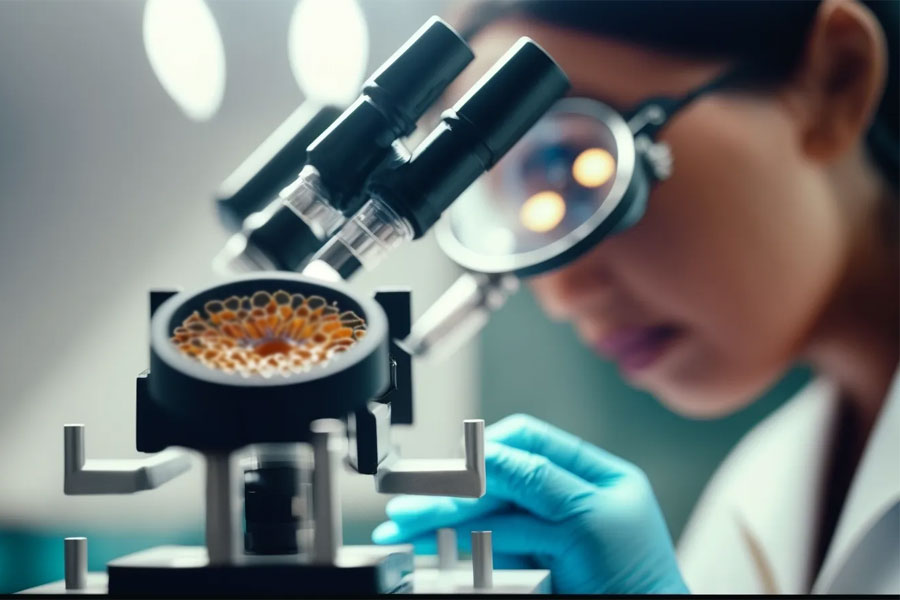An average person is probably familiar with the term “biopsy” from medical drama series, where it commonly appears in relation to cancer, which makes a procedure scary for the patient. Also, the procedure method itself can be anxiety-inducing due to its invasive nature. In this article, we are going to sort out what it serves for, when it is done, how, and all do’s and don’ts.
Prostate biopsy is a method of diagnosis based on tissue sampling from the prostate gland—an organ responsible for semen production—to be later examined under the microscope. The purpose of the research is to find out if the patient has prostate cancer, a condition characterized by the growth of malignant formations which supposedly affects 12,5% of natal males. This means that one of the eight patients is likely to be diagnosed. Luckily, the disease can be successfully treated, particularly when detected in the early stage, and the biopsy is aimed at that. It also allows a urologist to define how aggressive and severe cancer is, if present, how quickly it spreads, and what would be the best treatment option.
Symptoms that may require the procedure
Here are the most common foundations for a patient to be tested:
- A blood test for a prostate-specific antigen (PSA) shows levels that are too high for the patient’s age.
- A digital rectal exam shows prostate enlargement, lumps, or other shape abnormalities.
- The patient has difficulties with urinating.
- The patient had a biopsy previously, but its results are inconsistent with PSA levels, or it has shown abnormal noncancerous cells.
Types of Prostate Biopsy
The test can be carried out in three different ways, each having its advantages and flaws. The choice depends on the available equipment, evaluation of the post-procedure risks, patient’s anamnesis including tolerance for anesthesia, etc.
Transrectal (ultrasound)
This method is conducted through the rectum, hence, the name. It requires the patient to lie still on their left side with their knees bent up. A medical specialist who performs diagnostic inserts an ultrasound probing device into the anus. It has the thickness of a pencil or a finger, so the patient feels only mild discomfort or mere pressure. The ultrasound provides the doctor with prostate images, and they can inject local anesthesia. The needle penetration can be felt, but the sensation quickly changes into numbness. Retaining ultrasound navigation, the doctor then retrieves ten to eighteen tissue samples that are being sent to the laboratory for evaluation.
This method does not require expensive equipment, such as an MRI machine or a tiny digital camera. It is also comparatively simple. Its main downsides are low sensitivity (it has a 20–30% rate of false-negative results) and a high risk of having infection-related complications.
Transperineal
The transperineal biopsy, or TPB, is performed through the tissues between the scrotum and the rectum and targets anterior and transition areas of the prostate gland. They contain tumorous formations more often, thus, providing more accurate results. It also excludes direct exposure of the gland to the rectal microbiota, which significantly reduces the risk of infection.
This type implies that the patient lies in the dorsal lithotomy position on the special table. It gives the doctor better access to the perineum.
The test is MRI or ultrasound-guided and usually performed under local numbing, but since it requires a large number of samples (average twenty-four), spinal or general anesthesia can be used.
As of now, it is mostly used when the transrectal approach gave negative results that are contradictory to the general clinic picture.
Transurethral
It is a quite rarely used method that involves the application of a cystoscope – an instrument that looks like a flexible tube with a digital camera on top. It gets inserted into the urethral canal and the tissue pieces are received through the urethral wall.
Preparation for a Prostate Biopsy
After prescribing the test, the urologist will explain to you why is it necessary, the most preferable method, preparatory measures, etc. It is important that you feel confident and clearly know what to expect. Then you will schedule together the time and day of the procedure. The doctor may ask you to do the following:
- Have a urinalysis for the UTI. In the occurrence of a positive result, the procedure will be delayed in order to avoid complications.
- Put on pause taking anti-coagulative drugs for a couple of days before the test to prevent excessive bleeding.
- Take certain antibiotics before and after the test to prevent infection-related complications.
- Have a douche or a cleansing enema on the day of the biopsy (obviously, before the procedure).
- If you haven’t gotten anesthesia before, a test will be in order to determine if you have an allergy.
Prostate Biopsy Procedure
Prostate cancer biopsy is performed on patients in the lying position. Better to be dressed comfortably, but also have clothes that you can take off rather easily. After the brief discussion to ensure that you and the medical professional are on the same page, the procedure will begin with the personnel cleaning the area and applying the lube gel to insert the probe that guides the biopsy needle.
Description of the process
The process of sampling itself depends on the biopsy methods described earlier in this article. In most cases, the patient feels no more than an unpleasant sensation from the foreign objects in their body.
Use of local anesthesia
Prostate biopsy pain from the sampling needle can be easily managed thanks to local anesthesia, such as injections of 1–2% lidocaine solution. If the patient requires a large number of tissue samples to be taken, the doctors may refer to spinal or general anesthesia as well—in both cases, you will be asleep during the procedure.
How tissue samples are collected
The tissue sample is called the core and it is taken with an 18-gauge spring-propelled needle. The average number for transrectal prostate biopsy is not less than ten and up to eighteen with an average of twelve. The so-called saturation biopsy performed by the TPB method implies taking 24 cores.
The cores are preserved in containers filled with a conservant fluid to be studied under a microscope. During the research, a pathologist will calculate the Gleason score to evaluate the grade of the patient’s cancer—how severe and aggressive it is.
Length of the procedure
The biopsy itself takes from ten minutes to half an hour. The waiting for the results may take from three days to a week or two, depending on how overloaded the laboratory is with the work.
After the Prostate Biopsy
After the prostate biopsy, the recovery takes up from several days to a week or two: it is individual. It is recommended to withhold any heavy physical activities during this time, and take antibiotics prescribed by your urologist. You also need to stop being sexually active for this period. If the pain still bothers you, consult your doctor about preferable pain relievers. Remember to maintain hydration and sleep well to let your body heal itself.
Prostate biopsy side effects include blood in your semen, urine, and stool for some time after the procedure. It is common and expected, but be sure to contact your hospital if the bleeding and/or the pain do not go away or even get worse. Another red flag to call the doctor immediately is having a fever or chills, or being not able to urinate.
When your results are ready, the clinic will contact you, you will have a discussion with the urologist and go further from there.
Summary
The truth about prostate biopsy can be formulated into a couple of short theses:
- It is the only medical method to diagnose prostate cancer and prescribe its treatment.
- It is not very painful due to the use of local anesthetics, and it is well-tolerated.
- Getting ready for the test and the procedure itself requires productive communication between the doctor and the patient.
- A timely biopsy contributes to more easy and more effective anti-cancer therapy.
- To catch the need for a test in time, be responsible about your reproductive health and have regular check-ups.
FAQ
How is a Prostate Biopsy Done?
The test is carried out by sampling small parts of prostate gland tissues and studying them.
How long does it take to recover from a prostate biopsy?
The uncomplicated recovery may take a couple of days.
What percentage of prostate biopsies find cancer?
3 of 4 biopsies result in being noncancerous.
What is the downside to a prostate biopsy?
It can lead to a bacterial infection or have a false-negative result.
How painful is a prostate biopsy?
Being conducted under local numbing, it is nothing more than uncomfortable at the very worst.







